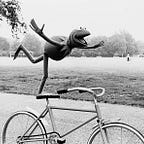DataCamp.com — Python w/Data Science Track Chapter 3 (Methods — Intro to Python)
Everything is Python is an object and have different methods depending on type. String has a replace method but a list doesn’t. But index method is available for both string and characters. Some methods can change the objects they’re called on such as append.
Exercises on Methods
- Use the
upper()method onplaceand store the result inplace_up. Use the syntax for calling methods that you learned in the previous video. - Print out
placeandplace_up. Did both change? - Print out the number of o’s on the variable
placeby callingcount()onplaceand passing the letter'o'as an input to the method. We're talking about the variableplace, not the word"place"!
# string to experiment with: place
place = "poolhouse"
# Use upper() on place: place_up
place_up = place.upper()
# Print out place and place_up
print(place, place_up)
# Print out the number of o's in place
print(place.count('o'))List Methods
Strings are not the only Python types that have methods associated with them. Lists, floats, integers and booleans are also types that come packaged with a bunch of useful methods. In this exercise, you’ll be experimenting with:
index(), to get the index of the first element of a list that matches its input andcount(), to get the number of times an element appears in a list.
You’ll be working on the list with the area of different parts of a house: areas.
Instructions
- Use the
index()method to get the index of the element inareasthat is equal to20.0. Print out this index. - Call
count()onareasto find out how many times9.50appears in the list. Again, simply print out this number.
# Create list areas
areas = [11.25, 18.0, 20.0, 10.75, 9.50]
# Print out the index of the element 20.0
print(areas.index(20.0))
# Print out how often 9.50 appears in areas
print(areas.count(9.50))List Methods (2)
Most list methods will change the list they’re called on. Examples are:
append(), that adds an element to the list it is called on,remove(), that removes the first element of a list that matches the input, andreverse(), that reverses the order of the elements in the list it is called on.
You’ll be working on the list with the area of different parts of the house: areas.
Instructions
- Use
append()twice to add the size of the poolhouse and the garage again:24.5and15.45, respectively. Make sure to add them in this order. - Print out
areas - Use the
reverse()method to reverse the order of the elements inareas. - Print out
areasonce more.
# Create list areas
areas = [11.25, 18.0, 20.0, 10.75, 9.50]
# Use append twice to add poolhouse and garage size
areas.append(24.5)
areas.append(15.45)
# Print out areas
print(areas)
# Reverse the orders of the elements in areas
areas.reverse()
# Print out areas
print(areas)